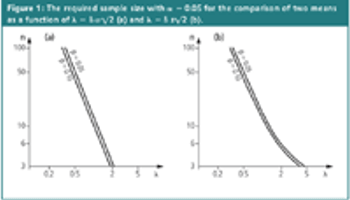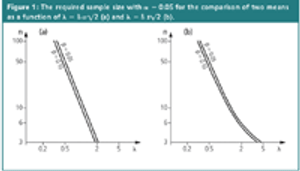
It would help to have a restricted set of chromatographic systems (CS) that together serve as potential starting points in method development.

It would help to have a restricted set of chromatographic systems (CS) that together serve as potential starting points in method development.

Analytical chemists are concerned with the quality of their methods and results. An important question in this context is whether the precision of a newly developed and validated method is up to standard. In other words: is the precision of the newly developed method comparable to what could be expected? This article looks at how the Horwitz equation can answer this. It also describes the results of an extensive study involving 10000 laboratories which indicates that the relative reproducibility approximately doubles for every 100-fold decrease in concentration and that, surprisingly, it does not depend on the type of material or method.

The sample size is determined by three factors: the size of the difference between the means that should be detected, the precision of the methods being compared and the significance levels at which the test is performed.

The authors explain how to construct box plots and how they can help you to learn more about your data.

Published: October 1st 2005 | Updated:

Published: February 1st 2006 | Updated:

Published: April 1st 2005 | Updated:

Published: July 1st 2005 | Updated: